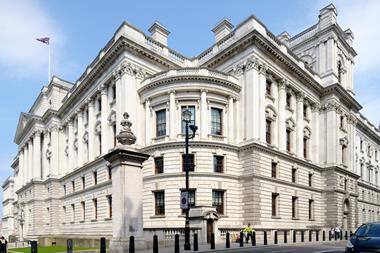QBE’s Ash Bathia says brokers should build relationships with insurers through economic hard times.
Crystal ball gazing is a pastime that should be undertaken warily. But a number of trends are now converging in the insurance sector which suggest brokers should be thinking hard about how they position themselves and their clients to best handle future shifts in market dynamics.
Rates are soft, fuelled in part by a string of record results which have reflected an usually low level of major catastrophes since 2005. This downwards pressure is now likely to intensify due to business downsizing and policyholders’ resulting expectations that reduced exposures will be reflected in reduced premiums.
But rates have also been fuelled by the better than expected performance of prior years which have enabled releases from reserves – and the cupboard is now bare. Simply put, the underwriting performance of 2007 and 2008 is running uncovered.
This issue is made more acute by the market’s awareness of the need to deliver shareholder value. Accordingly, capital is being ever more swiftly redirected to markets that can offer decent returns and removed from those that do not. Equally, combined ratios of over 100% are no longer regarded as the acceptable price of ‘buying’ cash to generate investment returns.
Just as critical, it is more than possible that there is still hidden pain from the credit crunch that has yet to materialise on the investment side of the balance sheet. Those that recall the London market in the early 1990s will also remember just how long it took the spiral to unwind.
The investment spiral is still unwinding and it is possible that insurers will face second or third tier exposures that could materially impact on already depressed investment returns.
The current economic fall out will also drive worsening results for insurers. When the going gets tough financially, the claims start flowing. From the householder looking for quick cash to pay off credit that is no longer sustainable to the business that might try to fund redundancies through long-term disability policies, claims will rise across the board.
“The current economic fall out will also drive worsening results for insurers. When the going gets tough
financially, the claims start flowing.
Put all of this together – and despite the natural inclination to argue that an underwriter ‘would say that wouldn’t he?’ - it is not hard to see that when the next major catastrophe hits, the insurance sector could experience a perfect storm. The key questions are when will the hard market materialise and what will be different this time?
On the plus side, there is no doubt that the market is far more robust than in 2001. The capital markets are more sophisticated, discipline is greater and underwriters are more professional. There is far less indiscriminate underwriting and where top line, rather than bottom line, performance rules, it is usually for strategic reasons.
Huge strides have been made in regulatory, market and internal controls, ranging from the creation of the Lloyd’s Franchise Board and the development of effective peer group review mechanisms to the growth of in-house actuarial teams.
Accordingly, insurers are far less likely to go out of business. But this does not mean that those in a less advantageous financial position will not look to slow their flow of claims payments – and just at a time when cash flow generally is likely to be under pressure.
But just as important, the insurance market has woken up to what defines a valued relationship and one way bets are never sustainable. Brokers that treat insurance as a spot market today will be treated as spot buyers when the hard market comes.
Those that build valued relationships based on mutually sustainable pricing will be at the head of the queue when the market turns, demonstrating who are the really smart brokers.
Hosted by comedian and actor Tom Allen, 34 Gold, 23 Silver and 22 Bronze awards were handed out across an amazing 34 categories recognising brilliance and innovation right across the breadth of UK general insurance.













































